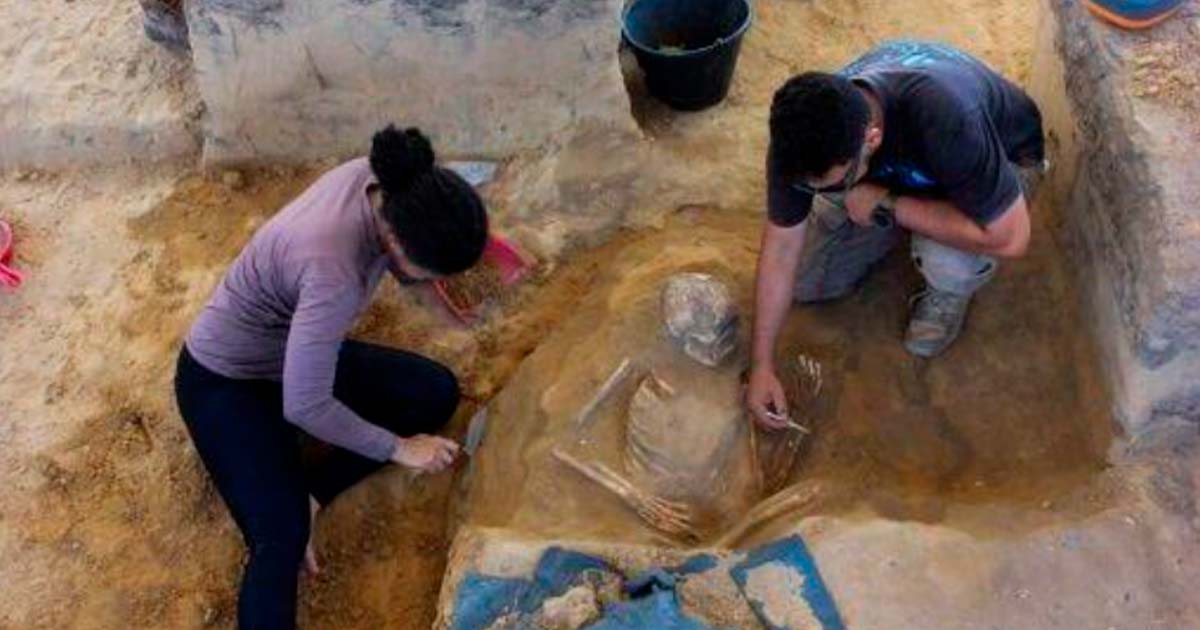In a significant archaeological find, 43 human skeletons and over 100,000 artifacts have been unearthed in Brazil, dating back approximately 9,000 years. This remarkable discovery was made in the coastal city of Sao Luis, the capital of Maranhao state in northeastern Brazil, during site preparation for a new apartment complex. The finds could potentially rewrite the history of human settlement in Brazil, shedding light on ancient cultures and settlement patterns in the region.
The Site and Its Initial Discovery
The six-hectare (15-acre) plot, known locally as Rosane’s Farm, was being surveyed by a construction team when they stumbled upon bones and shards of pottery. The lead archaeologist, Wellington Lage, was called in to examine the site, which turned out to be a multi-layered archaeological site with a wealth of artifacts and human remains.
Lage’s team began their excavation in 2019, commissioned by the Brazilian construction giant MRV to conduct a site survey before construction of the apartment complex. The initial discovery of bones led to a more extensive excavation, revealing a complex site with multiple layers of human activity. Researching the site, Lage discovered that bones had been recovered in the 1970s, with a human jawbone found in 1991.
Uncovering Ancient Skeletons and Artifacts
Over the past four years, the archaeological team, led by Lage, has uncovered 43 human skeletons and more than 100,000 artifacts. The artifacts included shards of pottery, bone fragments, shells, and other items, some of which were found in a “sambaqui mound” (a type of ancient shell midden or garbage dump). The sambaqui mound was located about two meters (6.5 feet) deep and contained ceramics dating back between 8,000 and 9,000 years, indicating the ancient origins of the site.
The Brazilian Institute for National Historic and Artistic Heritage (IPHAN) referred to the discoveries as a “grandiose” haul of bones and artifacts. The findings suggest a rich history of human settlement in the region, with multiple layers of cultural and historical significance.
The Importance of the Discovery
The site’s discovery has significant implications for our understanding of ancient Brazilian settlement patterns. The dating of the artifacts suggests that the region of modern-day Brazil may have been settled much earlier than previously thought. Lead archaeologist Wellington Lage noted that the 8,000 to 9,000-year-old ceramics could change the history of not just the region but all of Brazil.
However, the dating of the artifacts is based on depth, and confirmatory isotopic analysis has yet to be performed. This analysis will provide more precise dating and help validate the initial findings. IPHAN’s statement on the discovery emphasized its importance, calling it a “testament to the long history of human settlement in this region of Brazil” and a “landmark in our understanding of prehistoric Brazil.”
The Deeper Layers of the Site
The upper archaeological layer at the site comprised numerous Tupinamba artifacts, one of the various Tupi ethnic groups that inhabited present-day Brazil before the Portuguese conquest in the early 17th century. Below this top layer, the team found artifacts from Amazonian people, suggesting a complex history of human habitation.
At the base layer, the team uncovered the sambaqui mound, which contained a mixture of discarded bones, shells, and pottery. This find is significant because it indicates a long period of human activity, with multiple generations using the site for various purposes, including disposal of waste and possibly ceremonial activities.
Implications for Brazilian Archaeology
The discovery of 43 human skeletons and over 100,000 artifacts in Brazil has the potential to reshape the narrative of ancient Brazilian history. While the find is not without controversy, given the need for isotopic analysis to confirm dates, it ranks alongside other significant archaeological discoveries in Brazil, such as the Boqueirao da Pedra Furada archaeological site.
Boqueirao da Pedra Furada has been a source of debate among archaeologists, with some suggesting it was occupied as far back as 50,000 years ago. While these claims have been challenged, recent work at the base of Boqueirao da Pedra Furada and an open-air site in the valley has produced evidence of human occupation spanning more than 20,000 years, supported by C-14 and Optically Simulated Luminescence datings.
Conclusion
The discovery of 9,000-year-old human skeletons and over 100,000 artifacts in Brazil’s Sao Luis region is a remarkable find that has the potential to rewrite the history of human settlement in Brazil. The site’s complex layers and diverse range of artifacts provide valuable insights into ancient cultures and settlement patterns in the region. As researchers continue to examine the site and conduct further analysis, this discovery will undoubtedly contribute to our understanding of prehistoric Brazil and its ancient inhabitants.
Thank you!
Post Links:
The Evolution of the Christ Myth: Tracing Its Ancient Origins

